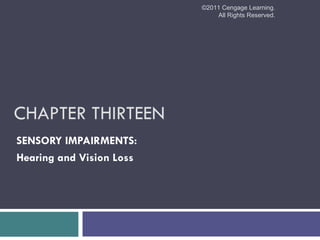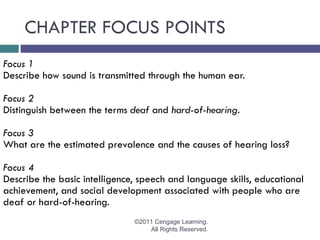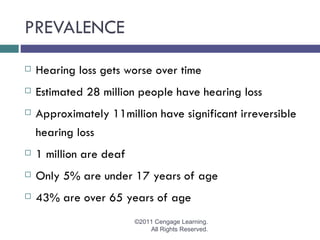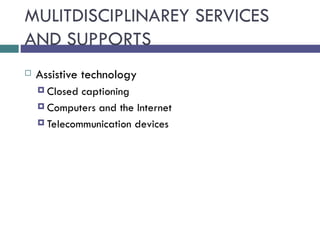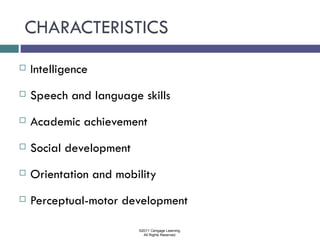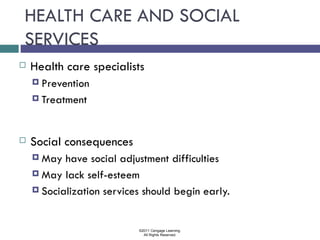This document is from a chapter about sensory impairments. It discusses hearing loss and vision loss in 12 sections. Each section focuses on a topic such as how sound is transmitted through the ear, definitions of types of hearing loss, prevalence and causes of hearing loss and vision loss, and educational and social supports for people with sensory impairments.
